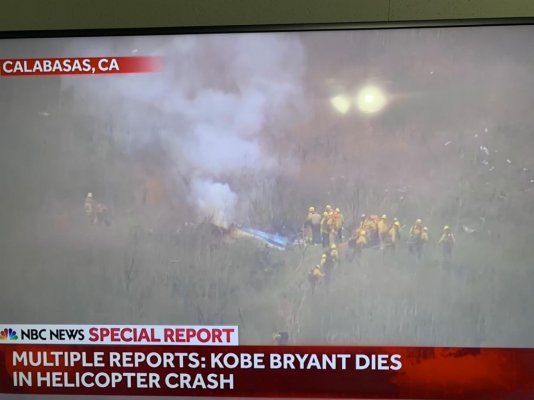You are using an out of date browser. It may not display this or other websites correctly.
You should upgrade or use an alternative browser.
You should upgrade or use an alternative browser.
Kobe Bryant passes in helicopter crash
- Thread starter getnasty
- Start date
Cyrus12
Well-known member
Crazy stuff...rip.
Seanhawk
New member
- Joined
- Apr 30, 2009
- Messages
- 6,819
- Reaction score
- 0
They kind of said it in passing on the ABC News special report, but they said his 4 daughters were with him.
SantaClaraHawk
Well-known member
- Joined
- Sep 18, 2015
- Messages
- 15,007
- Reaction score
- 3,088
It's so damn sad.
He had four kids, and there are five fatalities in the helicopter crash.
He had four kids, and there are five fatalities in the helicopter crash.
notyou
Active member
- Joined
- Sep 29, 2013
- Messages
- 571
- Reaction score
- 128
https://fox6now.com/2020/01/26/tmz-repo ... ter-crash/
This says he is survived by his wife and 4 daughters.
This says he is survived by his wife and 4 daughters.
Cyrus12
Well-known member
ABC has retracted the fact that his kids were on board and also read that Rick Fox daughter confirmed he was not aboard. Who knows...
Shanegotyou11
Well-known member
- Joined
- Oct 9, 2017
- Messages
- 5,362
- Reaction score
- 378
This is such a huge note for sports. This will go down like roberto clemente, thurman munson,etc
BlueThunder
Active member
I haven't given a rats ass about basketball since the Sonics left, but this is some messed up stuff. Kobe is one of the greatest to ever play. Only 41 and on top of the world. So sorry for his family... Just devastating. RIP Buddy....
Cyrus12
Well-known member
TMZ now reporting his 13 year old daughter was aboard...
hawksfansinceday1
Active member
Top-10 all-time imo
RIP Kobe
RIP Kobe
SantaClaraHawk
Well-known member
- Joined
- Sep 18, 2015
- Messages
- 15,007
- Reaction score
- 3,088
Cyrus12":1ggwej9f said:TMZ now reporting his 13 year old daughter was aboard...
I hope it's not all of them -- as the initial report said five died, and he has four daughters.
They also said the wife wasn't on board.
If she lost all four kids and husband, I don't know how you'd come back from that.
Sports Hernia
Well-known member
Shocking and sad. RIP.
[tweet]https://twitter.com/BhavishaPatel/status/1221536877133459462[/tweet]
SantaClaraHawk
Well-known member
- Joined
- Sep 18, 2015
- Messages
- 15,007
- Reaction score
- 3,088
They just reported that Kobe was on board w/his 13-yo plus another player.
Cyrus12
Well-known member
It was confirmed his daughter was on board plus another parent and player from the basketball game they were flying to. As per espn pro bowl game...
Seanhawk":18b1q6er said:They kind of said it in passing on the ABC News special report, but they said his 4 daughters were with him.
I heard 1 Daughter and that’s tragic enough.
OMG, if all 4 were.
[tweet]https://twitter.com/SportsCenter/status/1221541040110424064[/tweet]
Similar threads
- Replies
- 60
- Views
- 4K
- Replies
- 89
- Views
- 4K


